Midterm 3 Lecture 3: Prokaryotic gene expression
1/46
There's no tags or description
Looks like no tags are added yet.
Name | Mastery | Learn | Test | Matching | Spaced |
|---|
No study sessions yet.
47 Terms
when is the lac operon “on”
when lactose level is high and glucose is low
what is a promoter
a region of dna (dna sequence) that signals to rna polymerase where to begin transcription (where rna pol binds)
what is an activator
protein that directly binds to DNA to inc binding / activity of RNA pol
what is a repressor
protein that binds to operator to block binding of rna pol
what is an effector
umbrella term for small molecules that modulate activators/repressors
what are inducers
specific type of effector → small molecule that either binds to repressors and inhibits them or binds to activators and activates them
where are promoters typically located
upstream of the start site
t/f: all genes are transcribed at the same time
false →
what determines when and how much mRNA is made in prokaryotes
the promoter and surrounding sequences
binding of proteins to these regions of dna can inhibit or enhance transcription (eg in lac operon in e. coli)
t/f: gene expression is only regulated at transcription
false → regulated at many levels
explain transcriptional control of gene regulation in eukaryotes
binding of RNA pol to promoter
shift from initiation to elongation
release of mRNA at termination
what is an operon
a cluster of genes transcribed together
note: not all genes are a part of an operon → but genes not part of an operon can still be regulated
what is polyciotronic mRNA
mRNA that encodes for more than one protein
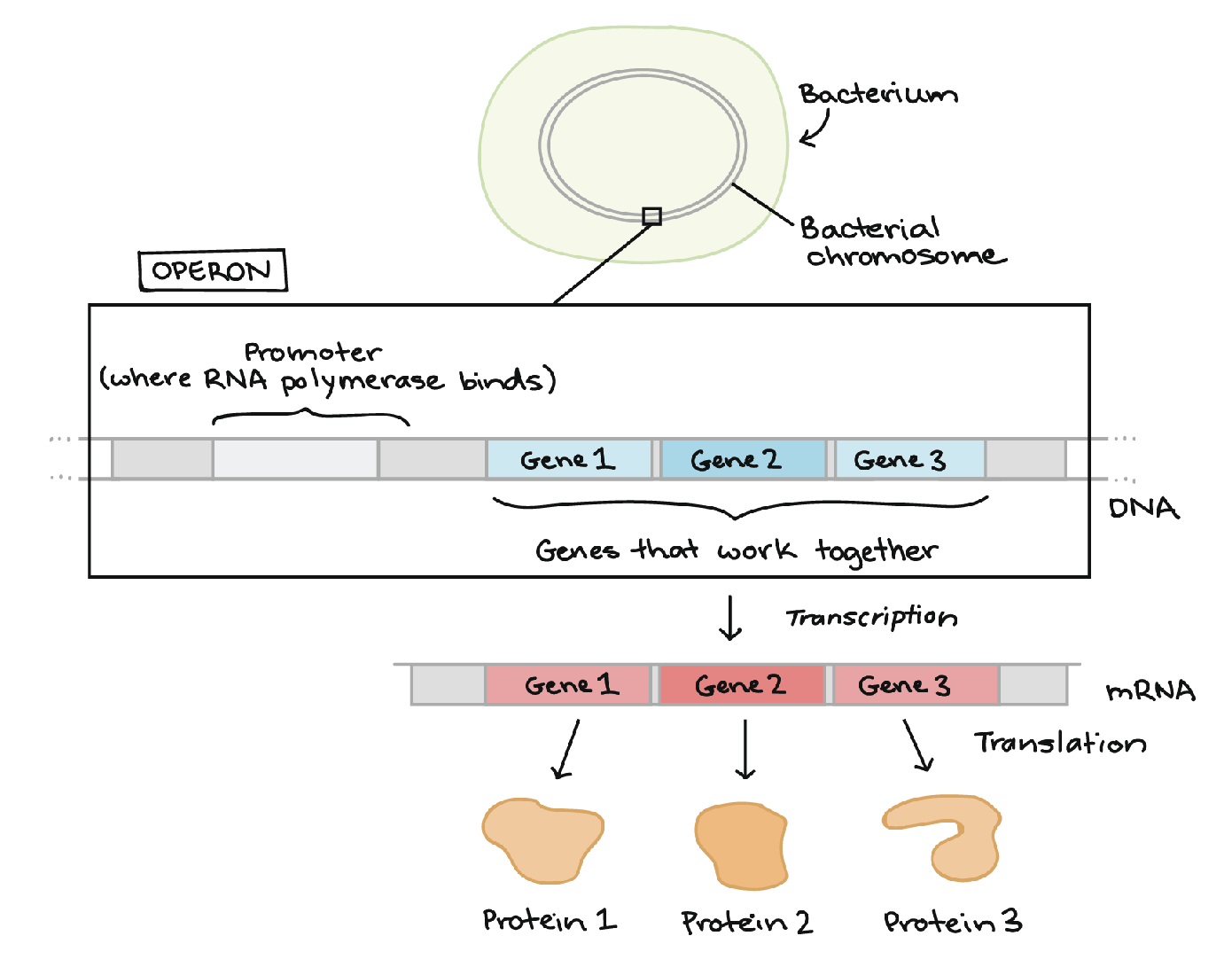
what is catabolism and what does it require, and is it off or on by default
breaking down larger molecules to obtain E and smaller molecules
requires inducible regulation
pathway should be off by default and turned on only when the molecules to be broken down are present
what is anabolism and what does it require and is it off or on by default
use of smaller precursor molecules and E from catabolism to build larger molecules
requires repressible regulation
pathway should be on by default unless cell has enough of the larger molecule
which 2 enzymes are required for lactose utilization
permease
transports lactose into the cell
beta-galactosidase
splits lactose into glucose and galactose
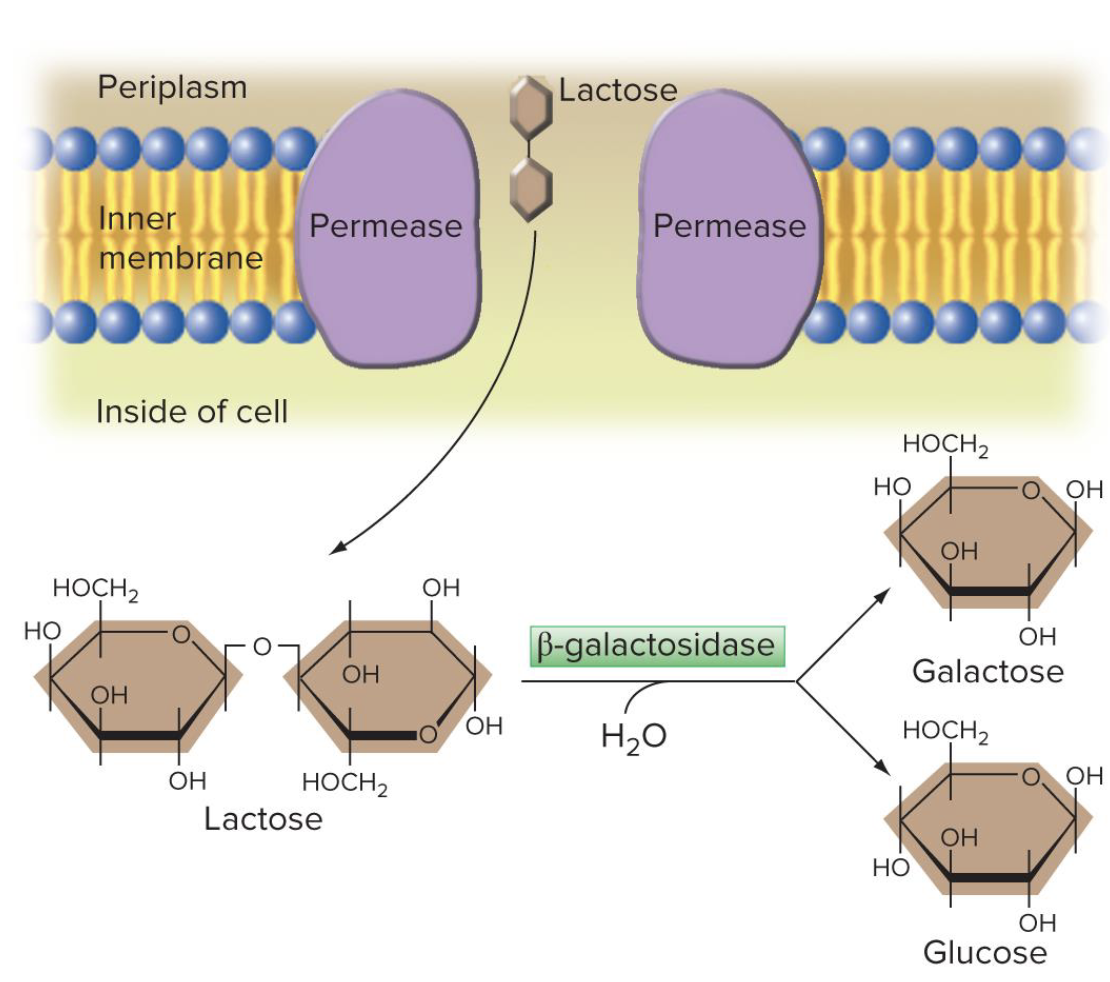
when there is no lactose present, how much permease and beta-galctosidase is produced
very little
t/f: the lac genes are transcribed together
true
what does the lac operon contain
lacZ, lacY, lacA, and regulatory elements (promoter and operator)
when lacZ expression is repressed or induced, which effects would be observed for lacY and lacA
the same effect
lead to proposal that the 3 genes are transcribed as part of same polycistronic mRNA
explain the overall regulation of the lac operon when glucose is NOT present
is “off” by default (we only want it on when lactose is present)
presence of lactose induces expression of the genes required for lactose utilization
addition of lactose to growth medium induces a 1000 fold inc in the production of lac permease and b-galactosidase
what is the repressor protein in regards to the lac operon
has a specific sequence that binds to operator and inhibits transcription
produced by gene lacI (which is not part of the lac operon)
in absence of lactose, repressor binds to operator and prevents transcription (rna pol cant bind to promoter)
lac repressor is a negative regulatory element
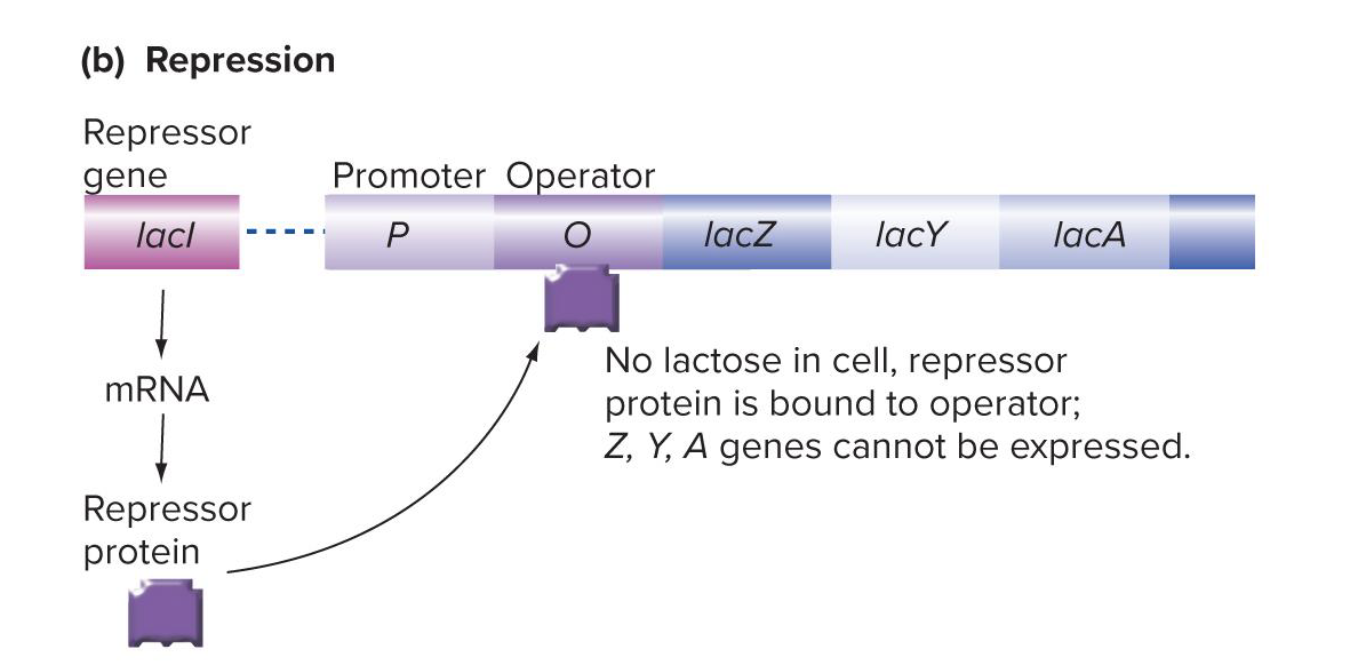
explain the structure of the lac repressor
forms an active tetramer (has 4 subunits)
binds to two conserved sequences of dna
causes it to loop
looping of dna prevents access of rna pol to promoter
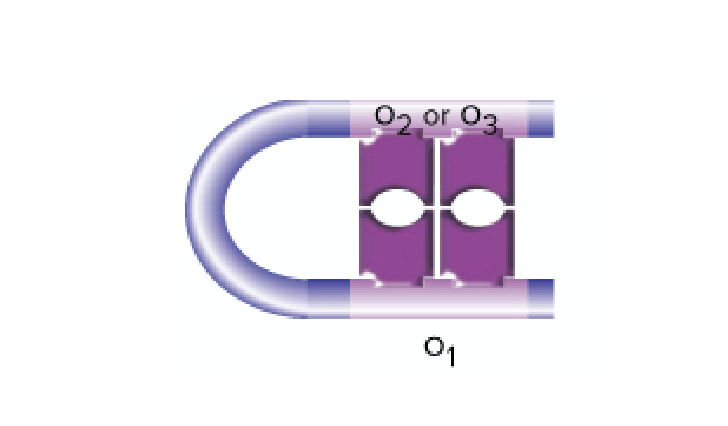
explain the induction of the lac operon when lactose is present
when lactose is present…
proportion of lactose is converted to allolactose by a b-galactosidase side rxn
allolactose is the inducer
inducer binds to repressor and prevents repressor from binding to the operator
making the repressor an allosteric repressor
no repressor bound to operator means that rna pol can bind to the promoter and transcription can occur

what are allosteric repressors
repressors that reversibly change shape when inducer is bound are allosteric repressors
how does lactose enter the cell and get converted to allolactose to induce transcription if the enzymes needed to do this aren’t being transcribed
operators are leaky
they are never completely on or off
repressor binds to operator but not covalently (can come off)
so basically without allolactose present, the more active the repressor is, the more binding it does w the operator, the less transcription that happens
note: there will always be some residual permease and beta-galactosidase in the cell
what is some evidence for a lac repressor protein (think lac-)
some mutations in lacl (lacl-) result in synthesis of b-galactosidase (lacZ) and permiase (lacY) even in the absence of lactose
these are examples of constitutive mutants
what are constitutive mutants
mutations that result in constitutive (always on) expression
protein synthesis occurs regardless of environmental conditions
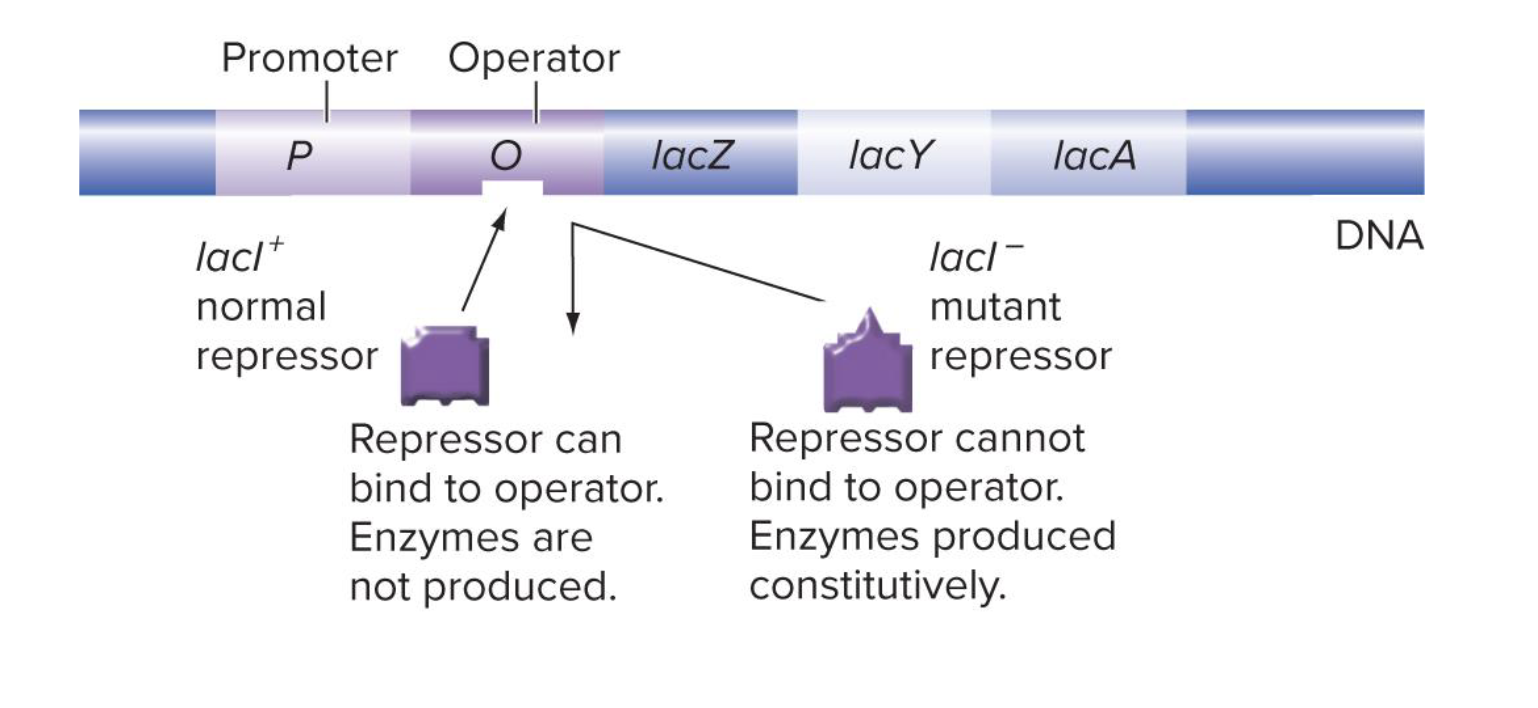
what is some more evidence for a lac repressor protein (think laclS)
laclS is a super repressor → can not be reduced (always bound to operator even with allolactose present → so nothing else can bind to the operator or promoter)
results in NO synthesis of b-galactosidase (lacZ) and permease (lacY) even in the presence of lactose
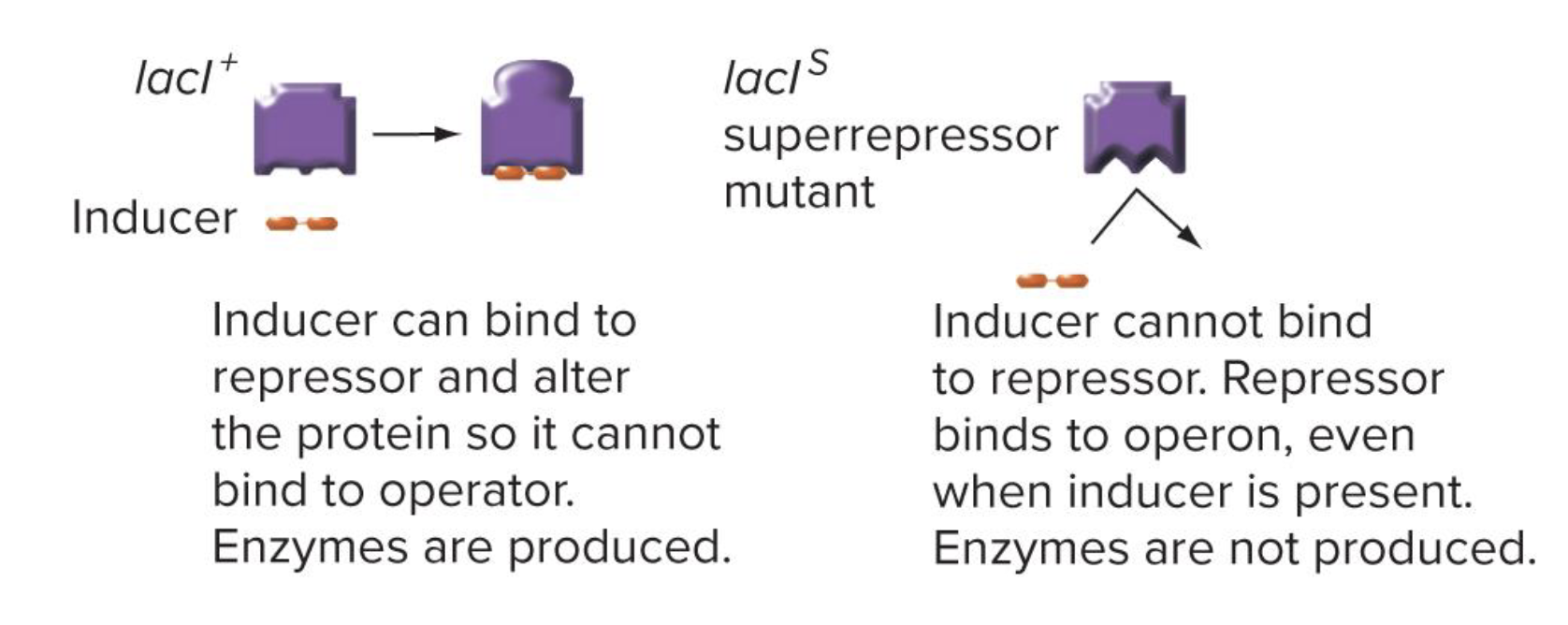
what is a mutant repressor that cant bind an inducer called
a superrepressor
what is Oc or lacOc
a mutant operator → c = constitutively on
repressor cannot recognize and bind to operator, so lac enzymes are synthesized constitutively
note: both lacl- and Oc mutations result in constitutive expression of the lac operon
explain cis action and state what typically acts in cis
cis elements affect regulation of nearby genes on same DNA molecule
DNA sites act in cis

explain trans action and state what typically acts in trans
trans elements can affect regulation on diff dna molecules
proteins act in trans (can float around and affect things elsewhere)

what is a plasmid
a small (smaller than chrom) independently replicating segment of dna common in bacteria
what is transformation
bacteria can take up (actually take in and incorporate) small bits of dna (not from them, like a plasmid)
what are merodiploids
partial diploid cells
what is the cis/trans test
use plasmids to make partial diploid cells (merodiploids) to study the lac operon
can add lactose with working gene that is fefective in the og cell and if there is a restoration of fx for the whole cell that means the proteins encoded for by the palsmid’s genes were able to travel to the og chromosome in the dna and effect it too → :. trans acting
is lacI a cis or trans acting element
trans → repressors can move
is o+ a cis or trans acting element
cis → it is an operator :. cant move
how many adults worldwide have lactose intolerance
68%
why do people have lactose intolerance
don’t produce enough lactase (basically same fx as b-galactosidase)
does the lac operon turn on if lactose and glucose are both present
no → it wont try and break down lactose for E if glucose is present
explain regulation of the lac operon in the presence of glucose
glucose is the preferred substrate of e. coli
in absence of glucose, cAMP levels inc
cAMP production is inhibited by glucose
cAMP is an inducer
cAMP binds to cAMP receptor protein (CRP)
cAMP receptor protein is an activator (positive regulator) of lac transcription that is active when bound to cAMP, it’s inducer
CRP binds to the dna and inc the efficiency of rna pol binding activity
what type of action does glucose work on to lower cAMP production
catabolite repression: the overall effect of glucose is to prevent lac gene expression
anenylyl cyclase produces cAMP → glucose inhibits adenylyl cyclase
explain regulation by lactose
repressor protein
produced by lacI and binds to operator, blocking transcription (by blocking rna pol from binding to promoter)
Allolactose
present when lactose is present
is an inducer (type of effector)
binds to repressor protein and prevents it from binding to operator
explain regulation by glucose
when glucose is absent, cAMP levels are high
cAMP is inducer for the activator CRP
cAMP-bound CRP is active and binds near promoter, inc rna pol binding/activity
when glucose is present, cAMP is low, CRP will not bind to cAMP, activator is inactive